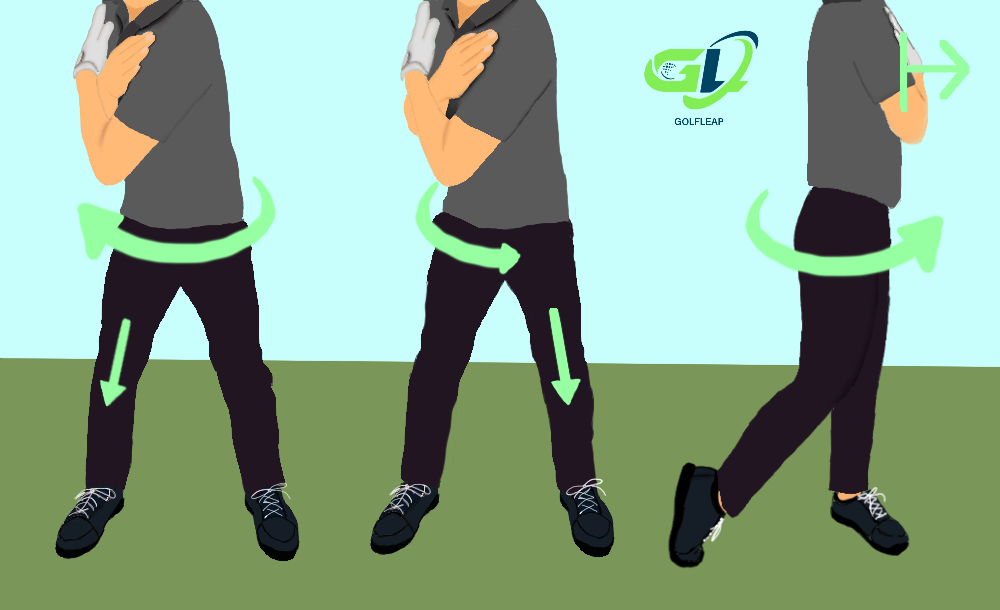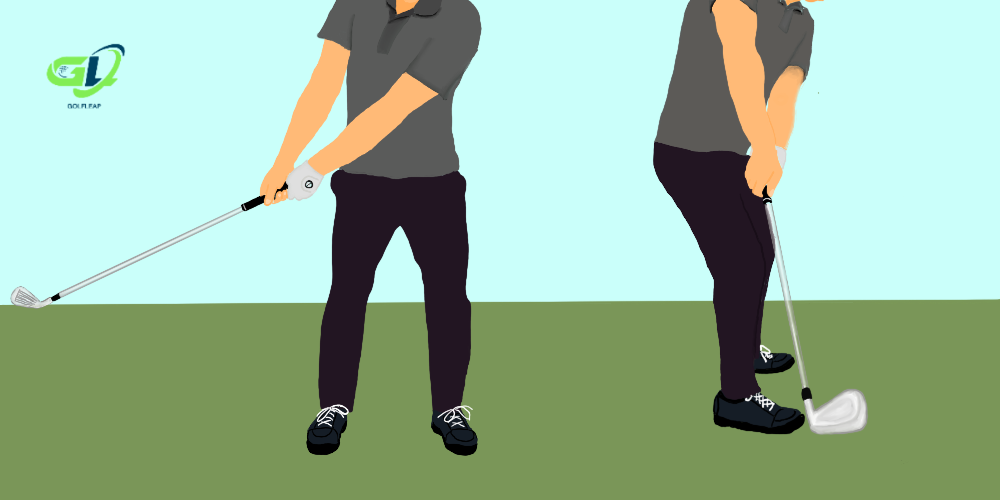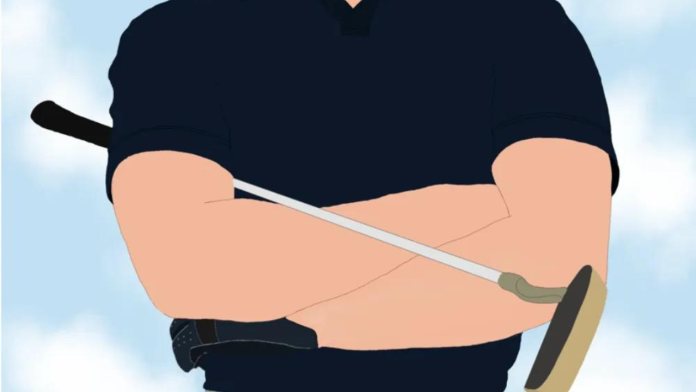Golf is a sport that requires both physical and mental skills, making it a challenging yet rewarding pastime for beginners and experienced players alike. While it may seem daunting to step onto the green for the first time, there are a variety of tips and techniques that can help newcomers improve their game and build confidence on the course.
In this blog post, we’ll explore 15 of the best golf tips for beginners that actually work. From perfecting your grip to honing your swing, these tips cover all aspects of the game and provide actionable advice for players at any level.
We’ll also discuss the importance of proper equipment and attire, as well as the etiquette and rules of the game. By following these tips and guidelines, beginners can not only improve their skills but also fully immerse themselves in the culture and community of golf.
Whether you’re a complete novice or looking to refine your technique, this post offers a wealth of information and insights to help you become a better golfer. With practice and determination, you can enjoy all the benefits that this challenging yet rewarding sport has to offer.
Tip 1: $500 Worth Of Lessons Will Go Further Than $500 Worth Of Equipment
Right off the bat, there is one costly mistake you can avoid as a beginner. That is, spending a lot of time and money to fix a bad habit in your golf swing.
Good equipment does not make a good golfer, good technique does. If you truly want to enjoy and be good at the game, invest in a professional PGA golf coach first before you invest in a new set of golf clubs.
Good coaches will help you understand the fundamentals of the golf swing and teach you to swing properly. Most will also give tips on concepts and strategies for your practice sessions and when you’re playing at a golf course. In most cases, they’ll also bring you down to play a few holes at a golf course when you’ve developed a decent golf swing. You can’t ask for a better start than that!
Your second priority as a beginner is to get the right golf clubs. Notice we said ‘right’ not new or used. You can get the newest golf clubs made for a pro and still end up never hitting the golf ball consistently even with the right golf swing.
Tip 2: Practice With The Right Equipment
Your second priority as a beginner is to get the right golf clubs. Notice we said ‘right’ not new or used. You can get the newest golf clubs made for a pro and still end up never hitting the golf ball consistently even with the right golf swing.
Buy Clubs Beginner-Friendly Clubs
Beginner-friendly golf clubs are those that have more “forgiveness” than your average golf clubs. In golf, “forgiveness” refers to the construction and design of a golf club that lessens the consequences of a bad golf swing and poor ball contact. With that said, the higher a golfer’s handicap, the more forgiving clubs they should get.
You can visit your local PGA store to have them recommend you a more forgiving set of golf clubs or ask us if you need any help! Generally speaking, you can differentiate a more forgiving golf club from its larger clubhead and clubface, and it’ll have more weight located deeper down at the bottom edge of the club head.
You may be tempted to get the newest set of golf clubs you see on TV, but as a beginner, those clubs are expensive and hard to hit. Remember, at the end of the day, what matters most for beginners are not the clubs they have, but the progress they can make with their swing and the score they can improve at the golf course. Starting with forgiving clubs will help them with both.
Bad Clubs Will Make Bad Swing Habits
Practicing with unsuitable golf clubs can slow down your golf swing progression even with the right golf lessons. Here’s how:
Most of the time, you’ll be practicing alone at the range. With clubs that don’t fit you, it’s hard to effectively execute what you learned, especially when your coach is not beside you. Everything will just feel clunky and uncomfortable and you’ll start changing your swing unknowingly.
Of course, we don’t want this to happen, that’s why if you can also invest in decent clubs besides just your lessons, that’ll be great. They don’t need to be the best clubs for you just yet, but at least they should be beginner-friendly.
Where To Buy Your First Golf Set
If you know which clubs you want, you can try looking for high-quality but used clubs available on certain golf sites like globalgolf.com. If you want to try this site out, look for clubs in ‘Mint’ condition! Trust us, you’d be amazed by how new they come!
Finally, if you are shorter than 5’6 or taller than 6’1, you may need golf clubs outside of the standard club length. Feel free to ask your golf coach if the clubs you’re looking to buy online are good for you to start with.
Tip 3: Always Start With Your Golf Set-Up
Most issues in our golf swing come from a wrong golf setup, specifically with our posture, stance, and grip. If you don’t have a golf coach, you’re more at risk of setting up incorrectly.
To avoid setting up incorrectly, follow these simple steps. The key to each is to keep them as simple as possible.
Bend Over From Your Hips
Golfers often make the mistake of bending forward from their waist rather than their hips during the setup. The benefit of bending from the hips is that it creates more stability and creates the proper axis tilt. To do this, start by tilting your upper body forward from your hips by roughly 45 degrees or somewhere between 1’ to 2’ clock from the head point.
The Proper Golf Stance
- Stand shoulder width apart for your mid-irons like the 7-iron and even wider if you’re using longer clubs like the 2-iron or driver. Finally, with shorter clubs like your wedge, stand hips-width apart.
- From there, flex your knees.
- Stand with even weight distribution on both feet.
The Neutral Grip
There are many ways to grip your golf club. For now, we’ll focus on the neutral grip for the right-handed golfer.
- With your left hand, rest the back of the grip from the first point the padded portion of your palm below your little finger all the way to the second point, which is the middle joint of your index finger.
- From there, close your left-hand while making sure you’re leaving an inch of the butt of the grip.
- With your right hand, take the fleshy part of your palm, below your right thumb and rest it directly above your left thumb.
- Your right thumb should be almost aligned with your left thumb. The only difference is to rest the right half of your right thumb on the grip.
- Close your right hand and decide if you’d go with the interlocking, overlocking, or 10-finger grip:
- Overlapping Grip: Your right pinky rests on the notch of the index finger and middle finger of your left hand
- Interlocking Grip: Your right pinky rests in between the index finger and middle finger of your left hand
- Baseball Grip: There is no overlap here. All fingers on your right hand will sit below the left hand
Tip 4: Swing With Your Hips

We’ve all heard before to swing with our hips rather than our arms, but what does that mean? To swing with your hips is to allow your hips to dictate the path of your golf club through the rotation of the hips rather than with your arms. When swinging with our hips, we create more clubhead speed, distance, and consistency, and allow for our golf club to swing on a plane.
Learning to swing with your hips is not easy, in fact, it’s probably the thing amateurs struggle with the most. In our opinion, the best way to learn how to rotate with your hips is by understanding how it should feel. We’ve got just the drill for that:
- Get in your golf stance with your hands on your opposite shoulders.
- Make a backswing until your back faces your target (make sure not to tilt your hips sideways, rotate them along your spine angle).
- Pause for one second to simulate a transition from when you’re on top of your golf swing.
- From there, rotate/ uncoil your hips as you would for a downswing while shifting the weight you had on your back foot to the front foot, this is called the pivot.
- Keep rotating until your chest faces the target.
Practice this drill at home and during your warmups, it’s a great way to register the feel of the proper body rotation into your golf swing.
Tip 5: Stay Connected On Your Takeaway

Previously, we said that most amateurs swing with their arms rather than their hips. In the end, those who continue to use their arms in their golf swing will struggle most with finding a consistent ball strike, and most will have an issue with a golf slice due to an over-the-top downswing.
One of the biggest reasons why golfers can’t stop swinging with their arms is that they’re often disconnected during their takeaway. This means they let their arms initiate the backswing rather than the rotation of their hips, followed by their shoulders.
Connecting your lead arm with your chest during the takeaway will start off your golf swing correctly by ensuring your hands don’t outrace your body rotation. Here’s a good takeaway drill for you to try:
- Take your driver and place the butt of the club towards your belly, just slightly above your belly button.
- Extend your arms and grip the shaft of the club.
- Make a takeaway without breaking the triangle formed from your arms and without the butt of the club leaving the belly.
- If the butt of the driver leaves your belly, then you most likely have a disconnected takeaway.
- Bring the club back to the center.
Repeat this drill to get a good feel for a connected takeaway. The emphasis here is on your lead arm, notice that during the entire takeaway, it stays ‘connected’ to your chest.
Tip 6: Focus On One Swing Thought At A Time
Haven’t you noticed that your best golf shots are those you think least about? We all know that feeling, while in your golf set-up rehearsing all the things you need to do to make the perfect golf swing just to end up shanking the ball 2 minutes later.
If that’s you, then you’re thinking too much before and during your golf swing. Instead, discipline yourself to practice just one technique at a time and move on only when that technique becomes natural to your swing. We’ve tried this with many golfers and it always leads to a better progression and a smoother golf swing.
You should also do this at the golf course! Before you’re about to hit your shot, clear your mind and don’t have more than one swing thought at a time.
If you’re still struggling with thinking too much try our 10-Second Drill.
The 10-Second Drill
- Place your ball on the mat and step off.
- Revise that one technique you want to focus on during your swing.
- Start counting down from 10 seconds.
- Once you start counting, you’ll have just 10 seconds to aim at your target and hit the ball.
- Don’t cheat yourself!
Tip 7: Playing Your Miss
To become a better golfer, you need to learn to play your misses. This means playing according to your tendencies when necessary. For example, if you’ve been slicing the ball all day, instead of aiming straight at the target, aim left to play the slice.
Of course, playing your miss goes beyond just a golf slice, it also applies to pulls, pushes, draws, fades, hooks, you name it. However, if you’re able to understand the nature of your tendencies and play them effectively, why not?
Here Is A Scenario:
The hole you’re about to play has the fairway straight ahead and a water hazard to your right. Going back to the example earlier, you’ve been slicing the ball all day and you don’t know why. What would you do? Here’s what an experienced golfer would consider:
- Am I more likely to hit the ball straight or hit a slice?
- A slice.
- If I were to aim straight, what would be the worst and best-case scenario?
- Worst case, I’ll be in the water if I slice it again and get a stroke and distance relief. Best case, I’ll be lucky and hit it straight this time and end up on the fairway.
- What if I were to aim more left but not pass the out-of-bounce marker? What would be the worst and best-case scenario?
- Worst case, you hit it straight into the trees, but you’re still in play with no stroke penalty. Best case, you’ll more likely slice the ball and it curves back onto the fairway.
Disclaimer: Some may argue that aiming more left to compensate for a slice will make the slice even worse. In some cases, that is true, but it really depends on the type of golfer you are. There are plenty of golfers, including some of us at The Golf Leap Blog, who have benefitted from playing the slice. Even some of the best golfers, like Bubba Watson and Tiger Woods, have played the golf slice to their advantage!
Tip 8: Swing In Tempo
An advantage to hitting farther with a driver is a great follow-up golf shot with some of our preferred mid-irons like the 7- and 8-iron. Yet, to hit farther, we often need a faster clubhead speed.
A common mistake golfers make to generate more clubhead speed is unknowingly rushing their golf swing. This makes them swing uncontrollably leading to poorer ball contact and at times, less clubhead speed. To fix this, golfers should learn to swing in tempo.
Instead of a “1, 2” swing tempo, which most golfers have. Slow it down to a “1 and 2” tempo: “1” being your backswing, “when you’re on top of your swing during the transition, and “2” being your downswing. Finally, don’t rush your downswing with your arms, and let your body rotation do the downswing for you.
Tip 9: Warm Up With Your Wedges
A great round of golf starts with a great warm-up. Though everyone has their preferred warming-up golf club, our pick is to start with a 52-degree wedge or sand wedge. We want our warm-ups to focus on getting the feel of the club head and our body rotation during the golf swing.
With a wedge, you’re more able to focus on actually warming up by loosening your body with a few half-swings rather than ripping the ball with a full golf swing. If you’re a beginner who doesn’t have a developed golf swing, then you should definitely do this!
Here’s What A Good Warm-Up Looks Like
Take your 52-degree wedge or your chipper and start with a few half swings to a target roughly 40 yards away. Focus on feeling the rotation of your body and the control of your clubface through impact. After roughly 7 balls, start hitting a few more balls farther to the 80- and 100-yard targets.
Tip 10: Know Your Golf Club Distances
When practicing at the golf range, our goal is to apply all the techniques and information we learned in each session to the golf course. Sadly, we can’t do that if we don’t even know how far we can hit with each club.
To be a good golfer, the first step is to know your golf club’s distances. This means you’re fully aware of how far you can hit with each golf club in your bag.
When you know your club distances, you’ll be more capable of predicting the outcome for each shot you make instead of wondering if you’re going to hit the ball too short or too far. As a result, you’ll start to make fewer mistakes and see your golf handicap improve significantly!
With that said, the next time you’re at a golf course, make sure to keep an eye out for the yardage markers located at the sides of the fairway. Most courses today have yardage markers that will have the distances written on them. If the marker uses stripes then know this:
| Stripe Count | Yardage |
| 1 Stripe | 100 Yards |
| 2 Stripes | 150 Yards |
| 3 Stripes | 200 Yards |
| 4 Stripes | 250 Yards |
Tip 11: Experience The Golf Course ASAP
Most beginners spend too much time practicing at the range before booking their first round at the golf course. The problem with this is that they would never know the purpose of golf unless they’ve experienced their first round of golf at the course. Knowing the purpose of golf will show you what to prioritize during your practices instead of blindly hitting balls for no reason.
What Does The Golf Course Teach Us?
The golf course is the first wake-up call for every beginner. You’ll first notice that hitting on grass is very different from hitting on the mat. You’ll also notice that there are different surfaces like taller grass (rough), slopes, bunkers, wet grass, etc.
However, the most important lesson you’ll learn on the golf course is the importance of accuracy. You can hit as consistently and as far as you want, but if you can’t efficiently get your ball on the green and into the hole, you’ll end with a bad round even with an amazing golf swing.
Are You Ready For Your First Round Of Golf?
A safe way to tell if you’re ready to play your first round of golf is when you:
- Can hit your driver at least 200 yards somewhat consistently.
- Are consistent with your 7-iron and your short game.
- Are familiar with the most common etiquettes and rules (we’ll cover this later).
Golf Course Hack
If you don’t want to play 18-holes just yet, most golf courses offer a 9- and sometimes a 6-hole session. If that’s still too much, try checking if your golf course offers a discounted rate an hour before sundown. If you’re lucky, you’ll sometimes have the whole course to yourself (particularly on weekdays), and can finish at least 3-holes without renting a golf cart!
Tip 12: Simulate A Golf Game During Practice
Similar to tip 11, a great way to practice is to simulate the shots you hit at the practice range as if they were at the golf course. This will make your practices more efficient and relevant to what you’ll encounter on a golf course.
Here are two of our favorites:
- Take your time between each shot: When playing on the golf course, there’s always a time gap between each shot. Therefore, we’d want to simulate that on the mat. After your first shot, step off the mat and give yourself some time to aim and re-address before hitting the next one. Doing this ensures that your body does not remain static for too long, resulting in better-quality shots while eliminating any shots to be unrealistic. The 10-second drill works well here!
- Focus on Accuracy: Unless you are practicing your driver, generally speaking, you’d want to focus on accuracy rather than distance. Therefore, you should always have a target in mind for each shot you hit at the practice range.
Tip 13: Bad Shots Are Apart Of Golf, Learn To Accept Them
“We all know that out here, everyone’s good is good. But how good is your bad? That’s the difference.”
– Tiger Woods
Bad golf shots are a part of golf. Even Tiger Woods, the greatest golfer of all time, believes that good golfers focus on improving their worst shots rather than trying to avoid them.
Most of the time, golfers give up a hole too quickly when they hit a bad shot. The worst is when they let their emotions take over and ruin everyone else’s time at the golf course.
As a beginner, you’ll encounter the rough or the bunker frequently. Shots from here are not easy and getting frustrated in these situations will just make things worse. Instead, keep your thoughts to a minimum and focus on finishing the hole on a bogey rather than a par.
One last thing, if you already have a decent golf swing, don’t change how you swing just because you hit a bad shot. As we said, bad shots are a part of golf and you probably just need to practice more on hitting the ball consistently with your golf swing.
Tip 14: Tee It Forward
As a beginner, don’t feel embarrassed to play each hole from the red or white tee box. In most cases, people would appreciate it when golfers are self-aware and play within their limitations.
At the end of the day, you’ll end up with a better score, more motivation to keep practicing, and a happier group because you managed to play on pace! If, however, you want to challenge yourself or think the red and white tee boxes are too easy, feel free to go back and try the blue tee box!
Tip 15: Know These 8 Golf Rules And Etiquettes Before You Play At A Golf Course
Golf rules and etiquette go almost hand-in-hand. Here are some of the ones you’ll need most before booking your first round at the golf course:
- Stay quiet when others are hitting:
- Don’t make any noise when other’s are playing and keep your phones in check.
- Be aware of where you’re standing:
- Don’t stand in front, directly behind, or beside someone when they’re swinging. If you step into their swing zone, you’re going to get clubbed. Try standing at least 10 to 12 feet away from them.
- No buggies, bags, or driving carts on the green:
- Get those things out of the green. They will damage the green and you can be fined heavily or even banned from the course!
- Obey the cart path rules:
- The golf course is hard to maintain. Be a responsible driver and drive within the cart path or you’ll ruin the grass people work hard to maintain. Don’t risk getting kicked out or fined!
- Dress appropriately for the course:
- You don’t need golf shoes for most courses, but a collared shirt is almost always a must. Don’t wear collared shirts with inappropriate or childish logos and/or phrases on them. Stick with the classy plain colors or something that is not distracting.
- For pants, you can wear long or short golf taper track pants or khakis.
- Know your turn:
- Based on the ‘honor system’ the person with the lowest gross score in the previous hole tees off first in the next hole.
- The person furthest from the hole always hits first. Even if you’re on the green but farther from the hole than your friend who is off the green, you still go first.
- When everyone is on the green, the person closest to the flag removes the flag and the furthest ball from the flag hits first.
- If the farthest person away is in the bunker, leave the flag in the hole for them to see where the hole is on the green.
- Always yell FORE!
- Yell “FORE right!” if you’re ball flies right towards a group of golfers. If left, then yell “FORE left!”. Getting hit by a golf ball is dangerous and almost getting hit by one without warning can infuriate some golfers.
- Play on pace
- The golf course can only fit so many groups of players at a time. As a beginner, chances are you will spend a lot more time per hole than those behind you. For that, you should be aware that you may be slowing down your group and the group behind.
- If you’re slowing your group down, bring extra balls so you won’t spend too much time looking for a lost ball. If the group behind you has caught up to you, let them pass so you won’t slow down the pace of the golf course.



